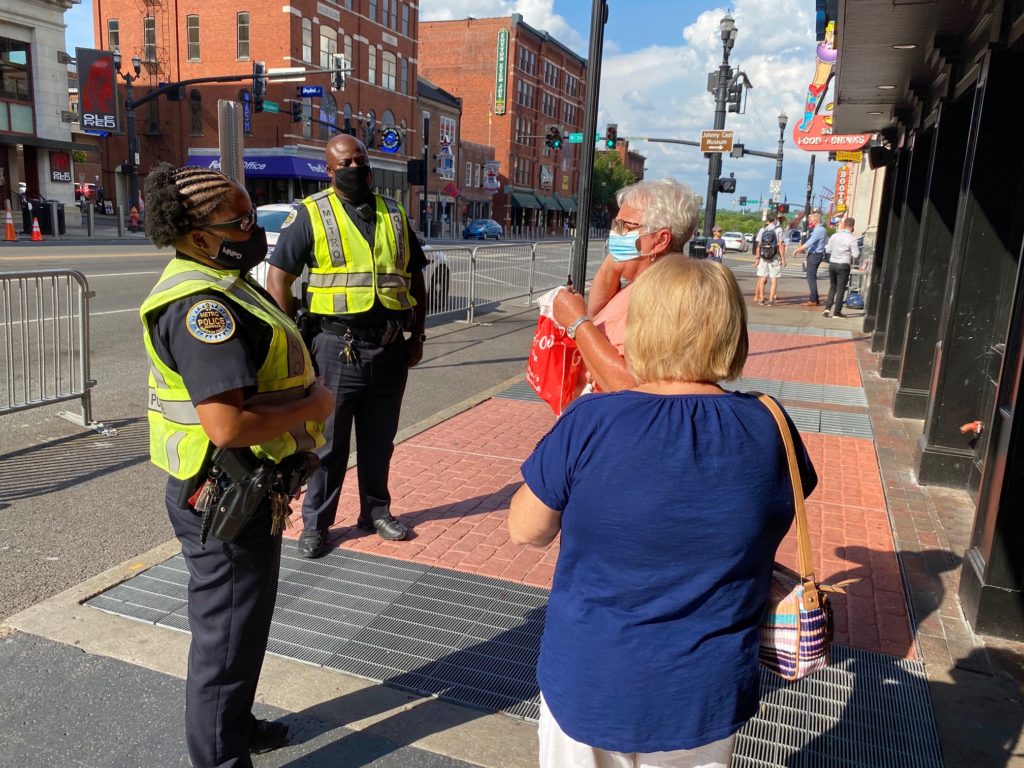
The 14-day average of new cases is double what it was a month ago in Nashville. But the metric has stabilized and begun heading down.
City officials credit the effectiveness of a mask mandate that began at the end of June. They’re backed up by a preliminary analysis published Monday from the Vanderbilt Microbiome initiative.
“Nashville remains in serious but stable condition,” says Mayor John Cooper, who offered an encouraging message at his press conference Tuesday morning.
The city’s positivity rate has also dropped from a high of 18% on July 15 to 13% now. This means 13% of people tested for the coronavirus are positive — a metric used to show whether there’s enough testing capacity to allow even those without symptoms to get tested. Public health officials have generally considered under 10% to be a good goal, a threshold Nashville surpassed after the safer-at-home order was lifted.
The transmission rate has fallen from a high of roughly 1.2 back to just below 1, meaning each new coronavirus case is infecting one other person on average. That figure has to stay further below one in order to stop the spread of the pandemic.
Dr. Alex Jahangir, coronavirus task force chair, says he doesn’t see the city hitting no new cases for a 14-day period, as some teachers have demanded, before resuming in-person classes.
“That’s not going to be a realistic expectation for a long, long time with this virus,” he says.
More Widespread, More Deadly
Nashville’s improvement comes as the coronavirus morphs into more of a statewide concern. For much of the pandemic, the city accounted for more than a quarter of all cases in the state. Now Nashville represents roughly 15% of the cases, as the virus surges in more rural parts of the state.
The spread in outlying areas is partly to blame for a metric that has not improved in Nashville. The city’s hospital capacity is as low as it’s ever been, as Nashville hospitals are starting to provide more overflow care for communities whose hospitals are getting overwhelmed, Jahangir says.
Nashville also just experienced its largest one-day death count yet, with 12 new fatalities attributed to COVID-19. Nearly all of them had underlying health conditions, according to officials, and were in their 50s or older. A spokesperson says there’s no indication that the uptick is related to reporting delays.
Deaths tend to lag spikes in coronavirus cases because patients will often spend weeks on a ventilator before succumbing to the disease. The city’s epidemiologists expect an elevated death toll for the next week or two.

